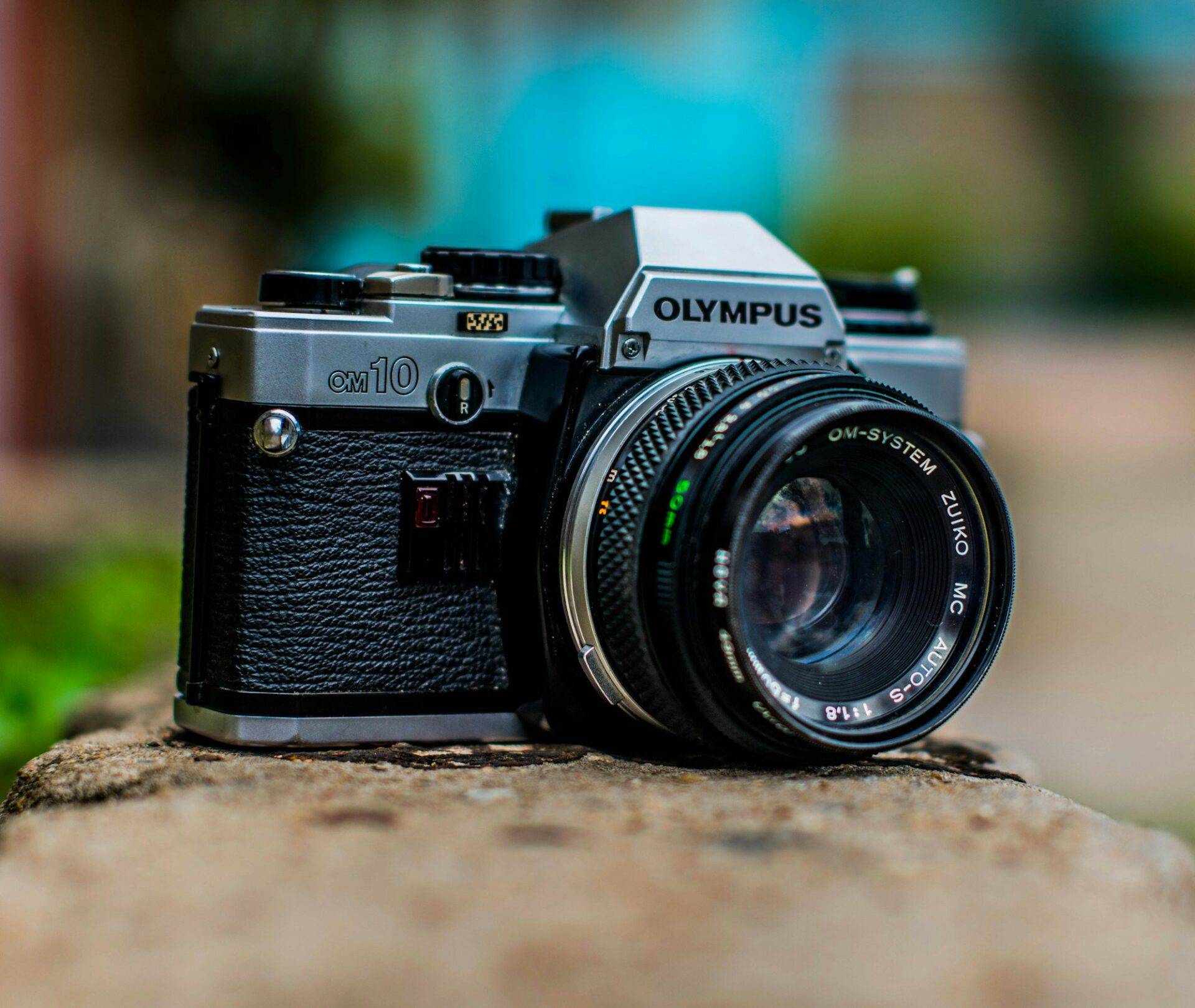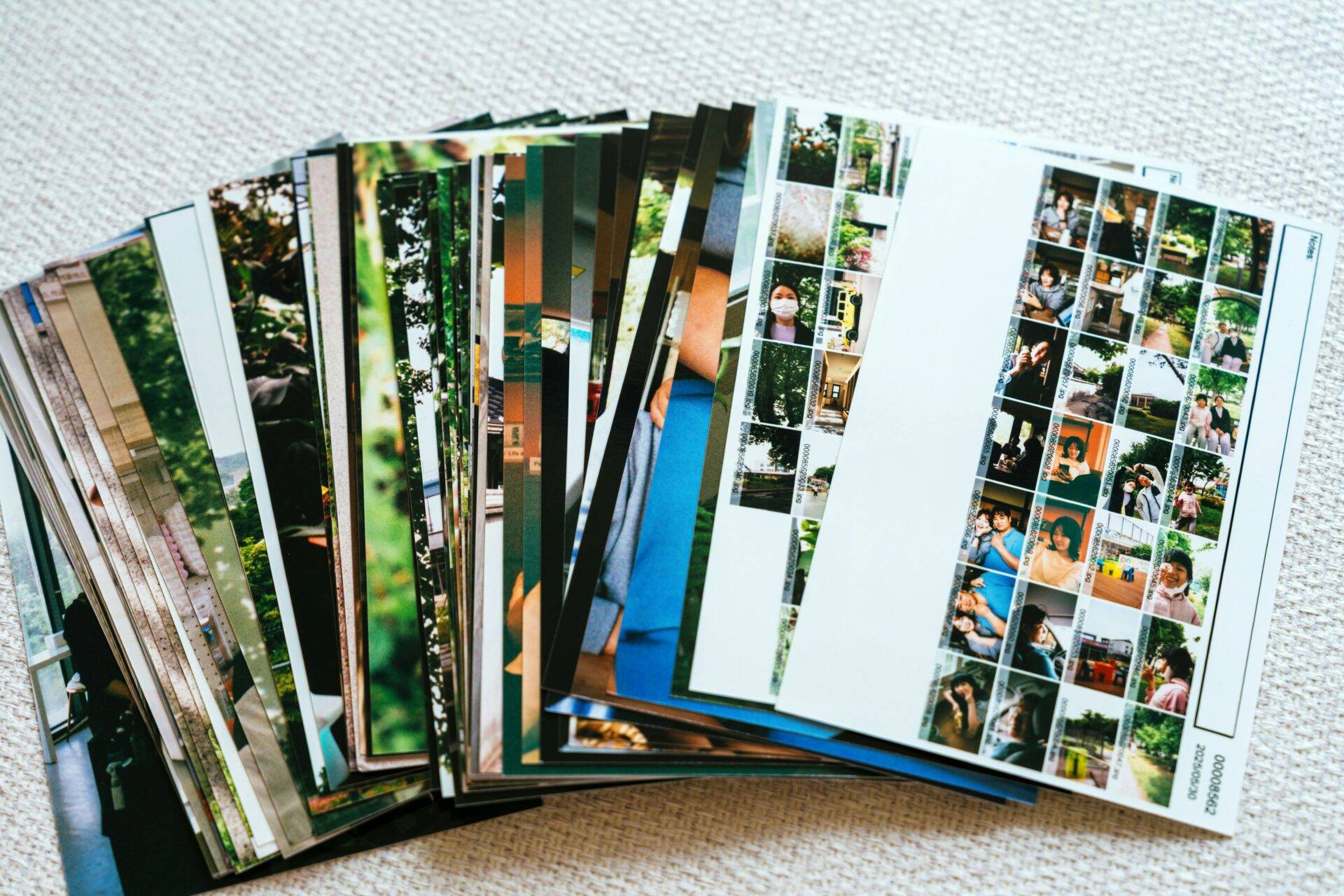Welcome to the fascinating realm of Depth of Field (DoF), a fundamental concept in photography and videography that can transform your images from ordinary to extraordinary. In this comprehensive guide, we will unravel the mysteries of DoF, explore its impact on your visuals, and provide you with practical tips to harness its creative potential.
Introduction
Welcome to the exciting world of photography and videography where mastering Depth of Field (DoF) can elevate your creative skills to new heights. In this blog post, we will delve into the intricacies of DoF, understanding its definition, exploring its significance in visual arts, and providing you with an overview of what you can expect from this detailed discussion.
- Definition of Depth of Field (DoF): Let's start by unraveling the mystery behind Depth of Field. Essentially, DoF refers to the range of distance in a scene that appears acceptably sharp in an image or video. It plays a crucial role in determining the visual impact and storytelling elements of your shots.
- Importance of DoF in photography and videography: Understanding and harnessing the power of DoF can significantly enhance the quality of your visuals. Whether you are capturing portraits, landscapes, or close-up shots, knowing how to manipulate DoF can add depth, dimension, and artistic flair to your work.
- Overview of the outline: This blog post is structured to provide you with a comprehensive guide on all aspects of Depth of Field. From explaining basic concepts to discussing practical applications and creative techniques, we aim to equip you with the knowledge and skills to make the most of DoF in your photographic and videographic endeavors.
So, buckle up and get ready to embark on a fascinating journey into the world of Depth of Field. By the end of this blog post, you will have a solid foundation in understanding and utilizing DoF to unleash your creative potential behind the lens.
What is Depth of Field?
You've probably heard the term "Depth of Field" tossed around in photography discussions, but what exactly does it mean? Well, let's break it down for you in simple terms.Explanation of the Concept:Depth of Field refers to the range in a photograph where objects appear acceptably sharp. In simpler words, it's about what is in focus and what isn't. A shallow Depth of Field means only a small portion of the image is in focus, creating a blurry background that enhances the subject. On the other hand, a deep Depth of Field keeps most or all of the image sharp from front to back, ideal for landscapes or group shots where everything needs to be clear.Shallow vs. Deep Depth of Field:Imagine a portrait where the person is perfectly sharp, but the background is beautifully blurry – that's a classic example of using a shallow Depth of Field for creative effect. Whereas in a landscape shot where both the mountains in the distance and the flowers in the foreground are in sharp focus, that's an example of a deep Depth of Field.Factors Affecting Depth of Field:Several factors influence the Depth of Field in your photographs:
- Aperture: The size of the aperture opening impacts DoF. A wider aperture (small f-number like f/1.8) produces a shallower DoF, while a narrower aperture (large f-number like f/16) creates a deeper DoF.
- Focal Length: Longer focal lengths tend to produce a shallower DoF, while wider focal lengths offer greater depth in the image.
- Distance from the Subject: The closer you are to the subject, the shallower the DoF becomes.
- Sensor Size: Different camera sensors have varying effects on DoF. Full-frame sensors offer different characteristics compared to crop sensors or medium format sensors.
Understanding these factors can help you control your Depth of Field and create compelling images that convey your artistic vision effectively.
Aperture and Depth of Field
When it comes to photography, one aspect that can truly enhance your images is understanding how aperture size affects Depth of Field (DoF). It's not as complex as it sounds, so let's dive in and uncover the magic behind it!
How Aperture Size Affects DoF
Aperture, represented by the f-number, plays a significant role in determining the depth of field in your images. The rule of thumb is simple: the wider the aperture (smaller f-number), the shallower the DoF, and conversely, the narrower the aperture (larger f-number), the deeper the DoF.
Imagine shooting a portrait with a beautifully blurred background that makes the subject stand out. In this scenario, you'd opt for a wide aperture like f/1.8. On the other hand, if you're capturing a landscape where you want everything from the foreground to the background to be in focus, you'd choose a narrow aperture like f/16.
Practical Examples and Images
Let's make this concept even clearer with some practical examples. Think about a close-up shot of a flower where you want only the petals in focus while the background softly blends away. To achieve this dreamy effect, you would select a wide aperture, creating a beautifully shallow DoF that draws attention to the intricate details of the flower.
Conversely, when you're photographing a sweeping landscape with rolling hills and a majestic sunset in the distance, you'd want everything sharp and crisp from front to back. This is the perfect opportunity to utilize a narrow aperture, ensuring that every element in your scene is captured with clarity and sharpness.
By mastering the art of selecting the right aperture for the desired depth of field, you can take your photos to the next level, adding visual interest and creativity to your compositions. So, next time you're out with your camera, don't forget to play around with different apertures to see the magic of DoF unfold before your eyes!
Focal Length and Depth of Field
When it comes to photography and videography, understanding the relationship between focal length and depth of field (DoF) is crucial for creating stunning visual effects in your images or footage.
Let's delve into how the lens focal length can directly influence the depth of field in your shots.
Influence of Lens Focal Length on DoF
Firstly, it's essential to grasp that different focal lengths can produce varying depths of field in your photos or videos. The focal length of a lens determines the angle of view and magnification, which consequently impacts the DoF.
Wide-Angle Lenses:
- Using a wide-angle lens can result in a broader depth of field, making it suitable for capturing expansive landscapes or architecture where you want more of the scene in focus.
- With a wide-angle lens, distant objects appear smaller, leading to a larger DoF due to the inherent depth compression.
Telephoto Lenses:
- On the other hand, telephoto lenses have a narrower field of view and magnify distant subjects, resulting in a shallower depth of field.
- Telephoto lenses are great for isolating subjects from the background, creating beautiful bokeh effects with a blurred background.
Practical Examples and Images
Let's put theory into practice with some real-world examples:
Imagine you're photographing a scenic mountain range at sunrise. By using a wide-angle lens, you can capture the entire landscape in sharp focus, from the foreground rocks to the distant peaks.Now, switch to a telephoto lens for a close-up shot of a flower blooming in a field. The telephoto lens will beautifully blur the background, highlighting the intricate details of the flower.
Experimenting with different focal lengths and observing how they affect your depth of field is a fantastic way to enhance your visual storytelling skills and create compelling compositions.
Subject Distance and Depth of Field
Hey there! Have you ever wondered how adjusting the distance between your camera and the subject can impact the depth of field in your photos? Let's dive into this fascinating aspect of photography and find out how subject distance plays a crucial role in achieving the desired focus and background blur.
How Distance Affects Depth of Field
When you vary the distance between your camera and the subject, you are essentially altering the perspective and composition of your shot. In terms of depth of field (DoF), moving closer to the subject decreases the DoF, resulting in a shallower focus area, whereas increasing the distance expands the DoF, leading to more elements in focus.
Imagine capturing a portrait where you want the subject's face to be tack-sharp while gently blurring the background to create a pleasing bokeh effect. By positioning yourself closer to the subject, you can achieve this artistic blur in the background, emphasizing the main subject in the frame.
Practical Examples and Images
- Close-Up Shots: By standing near your subject and using a wide aperture, you can isolate details and create a dreamy background that enhances the main subject.
- Landscape Photography: When shooting landscapes, stepping back and adjusting the distance to include foreground elements can improve the overall sharpness from front to back.
Now, let's explore some visual examples to better understand how subject distance impacts the depth of field in various photography scenarios. These images will showcase the difference in focus and background blur based on your proximity to the subject.
Adjusting your subject distance can truly elevate your photography game by allowing you to control which elements are sharply in focus and which ones fade into a beautiful blur. Experiment with different distances to master the art of depth of field and unleash your creative vision through compelling compositions!
Sensor Size and Depth of Field
So, you've learned a lot about depth of field (DoF) and how factors like aperture, focal length, and subject distance influence it. Now, let's dive deeper into the impact of camera sensor size on DoF and explore some practical examples and images to enhance your understanding.
Impact of Camera Sensor Size on DoF
Camera sensor size plays a significant role in determining the depth of field in your photographs. Different sensor sizes, such as full-frame, crop sensors, and medium format sensors, can affect how your images appear in terms of sharpness and background blur.
Full-frame sensors are larger and can capture more light, allowing for natural-looking bokeh and smoother background blur. This makes them ideal for achieving a more professional and artistic look in your photos. On the other hand, crop sensors, found in many consumer-level digital cameras, may result in a deeper depth of field due to their smaller size.
Medium format sensors, commonly used in high-end cameras, provide exceptional image quality and allow for greater control over DoF. They offer a unique perspective that enhances the overall visual impact of your images.
Practical Examples and Images
Let's take a look at some practical examples to illustrate the differences in DoF based on various sensor sizes:
- Full-Frame Sensor: When using a full-frame sensor camera with a wide aperture, you can create beautifully blurred backgrounds that make your subject stand out in portraits.
- Crop Sensor: With a crop sensor camera, you may notice that your images have more elements in focus due to the increased depth of field, which can be beneficial for landscape photography.
- Medium Format Sensor: A medium format sensor allows for precise control over DoF, making it perfect for capturing fine details in macro photography.
By experimenting with different sensor sizes and understanding how they impact DoF, you can elevate the visual appeal of your photos and unleash your creativity behind the lens.
Stay tuned for more insights on mastering depth of field and taking your photography skills to the next level.
Creative Uses of Depth of Field: Enhancing Your Photography Skills
Depth of Field (DoF) plays a crucial role in photography, allowing you to creatively manipulate focus to achieve stunning images. By understanding and utilizing DoF effectively, you can take your photography skills to the next level. Let's explore how you can creatively use depth of field in various types of photography:
Portrait Photography Techniques
In portrait photography, depth of field can help you isolate your subject from the background, creating a beautiful bokeh effect. By using a wide aperture (small f-number), you can achieve a shallow depth of field, making the subject stand out against a blurred backdrop. This technique adds a sense of depth and intimacy to your portraits, capturing the essence of your subject.
Additionally, experimenting with different angles and distances can further enhance the creative use of depth of field in portrait photography, allowing you to highlight specific features or expressions.
Landscape Photography Tips
When it comes to landscape photography, depth of field is essential for capturing the vastness and details of a scene. To achieve sharpness throughout the landscape, you'll want to use a narrow aperture (large f-number) for a deep depth of field. This ensures that both the foreground and background are in focus, creating a stunningly crisp image.
Techniques such as hyperfocal focusing and using leading lines can help maximize depth of field in landscape photography, allowing you to create captivating compositions with intricate details.
Macro Photography Challenges and Solutions
Macro photography presents unique challenges when it comes to depth of field, as capturing small subjects up close can result in a very shallow depth of field. This can lead to only a small portion of the subject being in focus while the rest appears blurred.
To overcome this challenge, macro photographers often use focus stacking techniques, where multiple images with different focus points are combined to create a final image with extended depth of field. By carefully selecting focus points and blending them together, you can capture intricate details in macro subjects with clarity and sharpness.
By mastering the creative uses of depth of field in portrait, landscape, and macro photography, you can elevate your photography skills and create visually impactful images that tell compelling stories. Experiment with different techniques, settings, and compositions to discover your unique style and vision.
Techniques for Controlling Depth of Field
Controlling the depth of field in your photography is crucial for achieving the desired focus and creative effects in your images. By mastering the techniques for controlling depth of field, you can take your photography skills to the next level.
Choosing the Right Aperture
One of the key factors in controlling depth of field is selecting the right aperture setting. The aperture not only affects the amount of light entering the camera but also determines how much of your scene will be in focus.
- Wide Apertures (Small f-number): When you use a wide aperture like f/1.8 or f/2.8, you achieve a shallow depth of field. This is great for portraits or isolating a subject from the background.
- Narrow Apertures (Large f-number): On the other hand, narrow apertures such as f/8 or f/16 result in a deeper depth of field, making more of the scene sharp and in focus, ideal for landscape photography.
Adjusting the Distance to the Subject
The distance between your camera and the subject also plays a significant role in controlling depth of field. By moving closer to your subject, you can decrease the depth of field, creating a more pronounced blur in the background.
Selecting the Appropriate Lens
Different lenses have varying effects on depth of field. Wide-angle lenses tend to have a greater depth of field, while telephoto lenses can produce a shallower depth of field, ideal for portraits and close-up shots.
Using Focus Points Effectively
Utilizing the focus points on your camera effectively can help ensure that your subject is sharp and in focus, enhancing the overall quality of your images. Experiment with different focus points to achieve the desired depth of field.
By mastering these techniques for controlling depth of field, you can unleash your creativity and capture stunning photographs that stand out. Remember, practice makes perfect, so don't be afraid to experiment and push the boundaries of your photography skills.
Tools and Accessories to Enhance Depth of Field Control
When it comes to mastering depth of field in your photography and videography, having the right tools and accessories can make a significant difference in the quality of your work. Let's explore some key accessories that can help you enhance your depth of field control.
Using Neutral Density Filters
Neutral density (ND) filters are essential tools for controlling exposure in bright conditions without affecting the depth of field. These filters reduce the amount of light entering the lens, allowing you to use wider apertures even in sunny environments. By using ND filters, you can achieve the desired depth of field without overexposing your images.
Tripods for Stability
Stability is crucial when shooting in scenarios that require precise depth of field control. A sturdy tripod can help you maintain stability and eliminate camera shake, especially when working with narrow apertures that require longer exposure times. By using a tripod, you can ensure that your images remain sharp and focused exactly as intended.
Apps and Software for DoF Calculations
In the digital age, there are numerous apps and software tools available to assist you in calculating and visualizing depth of field parameters. These tools can help you determine the optimal settings for achieving the desired depth of field in your shots. Whether you need to calculate hyperfocal distance or simulate different apertures, these apps and software solutions can be invaluable resources for enhancing your depth of field control.
By incorporating neutral density filters, tripods for stability, and specialized apps and software into your workflow, you can take your depth of field control to the next level. Experimenting with these tools will not only improve the technical aspects of your work but also provide you with the creative freedom to explore new artistic possibilities.
Common Mistakes and How to Avoid Them
When it comes to photography, there are certain common mistakes that many beginners make. Understanding these mistakes and learning how to avoid them can significantly enhance the quality of your images. Let's delve into some of these key errors and explore ways to steer clear of them.
Misunderstanding the Relationship between Aperture and Depth of Field
One of the most prevalent mistakes in photography is misunderstanding how aperture settings affect depth of field. Aperture plays a crucial role in determining the amount of background blur in your images. It's essential to grasp that wider apertures result in shallower depth of field, while narrower apertures yield greater depth of field. By mastering the relationship between aperture and depth of field, you can control the visual impact of your photographs effectively.
Neglecting the Impact of Focal Length
Another common pitfall is neglecting the influence of focal length on depth of field. The focal length of your lens can alter the perception of space and depth in your photos. Wide-angle lenses tend to have deeper depth of field, whereas telephoto lenses produce more pronounced background blur. Understanding how focal length affects depth of field allows you to choose the right lens for the desired effect and composition.
Ignoring the Importance of Subject Distance
Subject distance is often underestimated but plays a significant role in determining depth of field. The closer you are to your subject, the shallower the depth of field becomes. Conversely, increasing the distance between the camera and the subject results in a deeper depth of field. By considering subject distance as a crucial factor in your composition, you can achieve greater control over the visual elements in your photographs.
By recognizing these common mistakes and taking proactive steps to avoid them, you can elevate the quality of your photography. Embrace learning opportunities and experiment with different settings to enhance your understanding of aperture, focal length, and subject distance for achieving captivating images.
Conclusion
Alright, you've made it to the end of our journey through the fascinating world of Depth of Field (DoF) in photography. Let's quickly recap what we've covered, offer you some encouragement to play around with DoF, and provide some final thoughts on mastering this concept for creative photography.
Recap of Key Points: Throughout this guide, we've delved into the definition of DoF, its importance in photography, and the various factors that influence it. From aperture and focal length to subject distance and sensor size, we've explored how each element can impact the depth of your focus.
Encouragement to Experiment with DoF: Now that you have a solid understanding of how DoF works, don't be afraid to get hands-on with it. Experiment with different apertures, try out various focal lengths, and test how changing your distance from the subject can affect your images. The more you play around with DoF, the more creative and unique your photos will become.
Final Thoughts on Mastering DoF for Creative Photography: As you continue to hone your skills in using DoF creatively, remember that practice makes perfect. Don't shy away from challenges, embrace them. Whether you're capturing stunning portraits, breathtaking landscapes, or intricate macro shots, mastering DoF will elevate the quality of your photography and make your images stand out.




